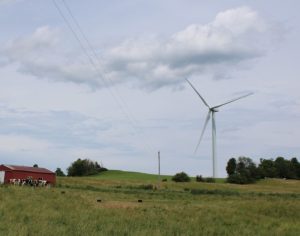MARCY, N.Y. — Setting its sights on a game-changer facility and promised state and federal investments in the semiconductor industry, Wolfspeed (NYSE: WOLF) is forging full-steam ahead at its Mohawk Valley Fab. The 500,000-square-foot facility, which opened just about a year ago as the world’s first 200 mm silicon-carbide fabrication facility, remains ahead of schedule […]
Get Instant Access to This Article
Become a Central New York Business Journal subscriber and get immediate access to all of our subscriber-only content and much more.
- Critical Central New York business news and analysis updated daily.
- Immediate access to all subscriber-only content on our website.
- Get a year's worth of the Print Edition of The Central New York Business Journal.
- Special Feature Publications such as the Book of Lists and Revitalize Greater Binghamton, Mohawk Valley, and Syracuse Magazines
Click here to purchase a paywall bypass link for this article.
MARCY, N.Y. — Setting its sights on a game-changer facility and promised state and federal investments in the semiconductor industry, Wolfspeed (NYSE: WOLF) is forging full-steam ahead at its Mohawk Valley Fab.
The 500,000-square-foot facility, which opened just about a year ago as the world’s first 200 mm silicon-carbide fabrication facility, remains ahead of schedule on hiring employees, landing work, and, now, building out the rest of its clean-room facilities, according to company CFO Neill Reynolds.
Reynolds recently sat down with the Central New York Business Journal to discuss the North Carolina company’s investment in the Mohawk Valley.
“Building this factory in upstate New York is a game changer for us,” he says. It is a key move for Wolfspeed as it works to transition from a small company into something bigger. The area, he says, was a really good match for what Wolfspeed, then called Cree, was seeking.
Things are working out fantastically so far, with the area living up to its promise, Reynolds says. “The university network here in upstate New York has been great.” Area officials and residents have been welcoming.
To date, Wolfspeed has hired more than 350 people to work at the facility — nearly 100 more than it had a year ago and way ahead of its original hiring schedule where it predicted it would reach 270 employees by early 2023.
“We’re still hiring,” Reynolds says. The company expects to employ about 600 people at full capacity, which it originally projected to reach in 2029.
That timeline has now moved up significantly as the company lands contract after contract for its silicon-carbide semiconductors. Lucid Motors, Jaguar Land Rover, and Mercedes-Benz are just a few of the companies that have signed on to install Wolfspeed semiconductors in their electric vehicles (EV).
The contracts, called design ins, take about three to five years before any product is even produced, Reynolds notes. That is due to all quality and integration work that must take place before production can begin. Wolfspeed has generated more than $15 billion in design ins over the past few years, with much of that work destined for the Mohawk Valley Fab.
The demand is strong in both the short term and long term, Reynolds says, which led Wolfspeed to speed up its timeline to finish building out its clean-room fabrication space in Marcy. “Building out capacity is really important,” he says. The company partitioned out the 125,000-square-foot clean room when it originally built the facility so that it could complete the build out in stages.
Rather than 2029, that build out will now happen as quickly as possible while still done in a methodical fashion, he says. Wolfspeed will bring in new equipment, adding lines one at a time to allow for testing, to the tune of about $2 billion. The company will receive a $500 million reimbursement from the state for its investment.
Adding the equipment takes time because the facility is fully automated and most automation equipment is sized for 150 mm semiconductors. So, there is a process to resize things as well as go through all the proper learning cycles to make sure everything operates at peak efficiency.
That efficiency, and the 70 percent larger surface area of the 200 mm wafers, is part of what is driving demand for Wolfspeed’s semiconductors. Bigger wafers mean more chips per wafer, and that increased volume helps drive down the cost. That lower cost, combined with the faster charging time and longer range of silicon-carbide chips, has helped demand skyrocket for the company.
Reynolds now expects the Marcy facility will be fully built out and reach its full capacity by 2027. At full capacity, the Mohawk Valley Fab can produce about $2 billion worth of product in an anticipated $20 billion market.
Wolfspeed is also building a new materials manufacturing facility in Durham, North Carolina, which will build the 200 mm wafers the Fab will convert into chips, and recently announced plans to build a new fabrication facility in Saarland, Germany. That facility will allow the company to better serve its global customers, Reynolds says.
While the new facility in Europe will also be a 200 mm facility, the Mohawk Valley Fab will always be the first and the facility that helped put Wolfspeed on the map.
“This factory is very much at the forefront of the industry,” Reynolds contends.
Wolfspeed’s semiconductors, power-switching devices and RF devices are used in the electric vehicle, fast charging, 5G, renewable energy and storage, and aerospace and defense industries.




